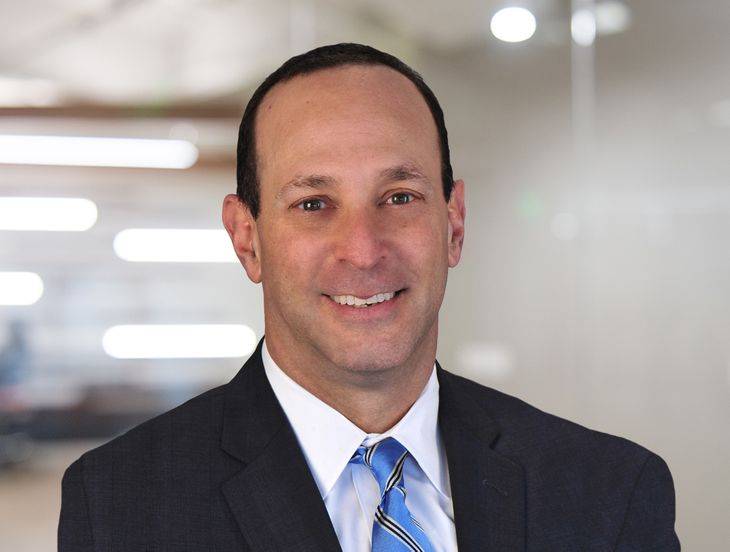The Top 14 Workplace Law Stories from October 2022
Insights
11.08.22
It’s hard to keep up with all the recent changes to labor and employment law. While the law always seems to evolve at a rapid pace, there have been an unprecedented number of changes for the past few years—and this past month was no exception. In fact, there were so many significant developments taking place during the past month that we were once again forced to expand our monthly summary well beyond the typical “Top 10” list. In order to make sure that you stay on top of the latest changes, here is a quick review of the Top 14 stories from last month that all employers need to know about:
- FP’s Workplace Law Forecast 2023
It’s never easy to make accurate predictions about what we might expect to see in the workplace in the coming year. Despite the ever-present uncertainty, we asked our firm’s thought leaders to develop their best predictions for 2022 during the first half of this past year, which you might remember from our FP Forecast series that ran starting in January. They did a pretty good job anticipating what the year would bring, as you’ll see in this report, which includes a recap. Additionally, in October, we asked these same attorneys to take it a step further and look at what 2023 would hold for employers across many of our practice areas and industries. We hope you enjoy thumbing through this report and it helps you set the stage for a successful 2023.
- Labor Department Proposes to Rescind Flexible Independent Contractor Test and Re-Impose Outdated Standard: 5 Key Questions
Any business that retains independent contractors as part of their workforce may have a harder time maintaining their business model under a proposed rule that the U.S. Department of Labor (DOL) just released on October 11. The DOL’s current rule on the books — which was issued by the prior administration and has been the source of ongoing litigation — makes it easier to classify workers as independent contractors under federal wage and hour rules. As expected, however, the Biden administration is seeking to rescind that rule and return to a standard that would likely result in more workers being classified as employees. What do you need to know as the DOL works to finalize its proposal? Here are the answers to the five key questions you’re sure to have.
- More Money, More Problems? NLRB Rules that Employers Must Collect Union Dues After CBA Expiration
The National Labor Relations Board just ruled that employers must continue to collect union dues even after the collective bargaining agreement has expired, a decision that will require many businesses to alter their labor relations practices. The October 3 decision in Valley Hospital Medical Center, Inc. returns the nation’s unionized employers to the standard used during the Obama administration that prohibited employers from unilaterally ending the collection of union dues after contract expiration. The NLRB’s ruling, decided 3-2 along party lines, will allow unions to continue to receive their dues revenue stream during the contract hiatus. Here is what employers need to know about this significant doctrinal shift.
- What Employers Need to Know About EEOC’s New Mandatory Workplace Poster
Businesses with at least 15 employees need to replace their workplace discrimination poster with a new notice that the Equal Employment Opportunity Commission (EEOC) recently published. Although the EEOC issued the initial update on October 19, you should note that the agency released a revised version the next day, and the October 20 poster is the operative version. So, any employers that downloaded the initial release should make sure they have posted the correct version. The new notice must be posted in a conspicuous location in the workplace where notices to applicants and employees are customarily posted. What do you need to know about the update?
- 6 Antitrust Compliance Steps Employers Should Consider After First-Ever Federal Criminal Prosecution in Wage Fixing Case
A healthcare staffing firm in Nevada recently pled guilty to conspiring with a competitor to fix wages for school nurses and agreeing not to solicit each other’s workers – the nation’s first-ever successful criminal prosecution of a workplace-related antitrust matter. The firm was sentenced to pay $134,000, according to an October 27 announcement from the U.S. Department of Justice (DOJ). While the dollar amount may not seem high, the staffing firm was fairly small and the violations occurred over less than a year – meaning larger companies could face larger fines for similar conduct over a longer period. What does this historic outcome mean for your business? Here’s what you need to know about antitrust laws and recent federal actions against employers – as well as six steps should you take to stay on the right side of the law.
- NLRB General Counsel Announces Plans to Crack Down on Workplace Monitoring Practices
The top lawyer from the National Labor Relations Board recently announced that agency investigators should target workplace surveillance and “algorithmic management” technologies that have a “tendency” to interfere with employees’ protected workplace activity – an announcement that will soon impact both unionized and non-unionized workplaces alike. General Counsel Jennifer Abruzzo’s GC Memo 23-02, issued on October 31, represents the latest in a series of memoranda restricting employer workplace rights. It asserts that increased reliance on sophisticated technological tools to monitor employee activities on the heels of the pandemic have the practical effect of chilling union and other protected concerted activities, and that AI-driven software could use data obtained from such surveillance to make automated decisions that discourage those activities. What do employers need to know about this potentially wide-sweeping new approach?
- Should the Severe Start to Flu Season Lead Your Workplace to Require Flu Shots? 2 Main Considerations for Employers
The Centers for Disease Control and Prevention reported on October 14 the start of the most severe flu season in over a decade, leading employers of all types to decide whether they should mandate flu shots for their workforce. The flu season typically runs between October and May with a peak in January and February, but surprisingly high numbers of infection, hospitalizations, and flu-related deaths sprouting in late August has raised the attention of employers. And despite the threat and the CDC’s strong encouragement to inoculate against influenza for the past few months, the number of flu shots administered across the country is lagging at this stage in the season. Even outside the healthcare industry – where required annual flu shots are standard practice – some employers who are already facing staffing shortages may therefore be tempted to mandate the flu shot to avoid outbreaks and maintain necessary staffing levels. What are the two main legal and practical considerations you should take into account before making this determination?
- Workers Should be Paid for the Time Spent Booting Up Computers, According to Federal Appeals Court
The Ninth Circuit Court of Appeals recently held that time spent booting up computers for call center employees at the beginning of their shift is integral and indispensable to their work and thus compensable under federal wage and hour law. The October 24 decision in Cadena et al. v. Customer Connexx LLC will directly impact employers on the west coast (California, Washington, Oregon, Nevada, Arizona, Montana, Idaho, Hawaii, and Alaska) but could also carry over to employers across the country. And it needs to be read in conjunction with state wage laws – which are at times stricter than federal law. What do employers need to know about this development?
- What Employers Need to Know About California’s Updated COVID-19 ‘Close Contact’ Definition
Employers may be able to revise their COVID-19 protocols now that the California Department of Public Health (CDPH) has updated the definition of “close contact” for isolation and quarantine purposes. Over the summer, the CDPH changed the “close contact” definition to mean someone “sharing the same indoor airspace” with a person who is infected with COVID-19 for a cumulative total of 15 minutes or more over a 24-hour period. The most recent update, which took effect on October 14, now applies an updated “close contact” definition for some California employers depending on the size of the workplace. What do you need to know about the changes and how they impact your COVID-19 policies and procedures?
- Employers May Continue to Use Current I-9 Form and Review Employment Documents Remotely … For Now
Due to ongoing COVID-19 concerns, employers will have the flexibility to remotely review employment documents for I-9 purposes in some circumstances until July 2023 — and they should keep using the current Form I-9 even though it was set to expire at the end of the month, according to two important announcements on October 11 from the Department of Homeland Security (DHS). Here’s what you should know as we wait for additional DHS guidelines and prepare for anticipated changes.
- Workplace Investigation Notes: To Keep or Not to Keep? Recent Case Provides Guidance to Retailers
Conducting investigations of internal complaints of discrimination and harassment is one of the most important jobs for retail employers to undertake. More than simply helping your business avoid liability, these investigations are critical for ferreting out the types of misbehaviors that undermine employee morale and motivate good employees to look for other jobs. But once the investigation is over and the appropriate actions taken, a decision must be made about whether to retain your investigative materials. An October 7 decision out of a federal court in Idaho has made the practice of destroying notes dangerous. Retailers should take note of this decision before adopting a specific policy or practice.
- Washington Supreme Court Upholds Prevailing Wage Statute to Ensure High Rates Across the State
The Washington Supreme Court recently upheld amendments to the state’s prevailing wage statute that pins the wage rate to the highest collective bargaining statute in each separate county, a decision that is sure to have employers bracing for increased labor costs. While the industrial statistician for the Department of Labor and Industries twice yearly sets the prevailing wage rate that public works contractors must pay, recent legislative amendments to the state Prevailing Wage Act upends how the statistician sets that rate. And on October 13, the Washington Supreme Court handed down its opinion in Associated General Contractors of America et al. v. State of Washington et. al., upholding this new model where state contractors must follow a prevailing wage requirement based on the highest collectively bargained wage rate for the relevant trade in the county where they operate. What do Washington State employers need to know about this development?
- An Employers’ 3-Step Plan to Comply With San Francisco’s New Permanent Public Health Emergency Leave Ordinance
When San Francisco’s new Public Health Emergency Leave Ordinance (PHELO) went into effect on October 1, employers were required to begin offering paid leave to employees working in San Francisco during “public health emergencies.” However, employers still have questions about this new requirement, which came into effect thanks to voters approving Proposition G in the June 2022 election. This Insight explores the ins and outs of the new law and provides a three-step plan for employers to adopt in order to come into compliance.
- North Carolina OSHA’s Maximum Penalties More than Doubled This Weekend: 4 Takeaways for Employers
Employers may be surprised to learn that North Carolina OSHA’s maximum penalties more than doubled on October 1 — and these penalties will increase every January, starting in 2023, to match the maximum penalties available to Federal OSHA. How did this happen? Back in July, Governor Roy Cooper signed into law the Current Operations Appropriations Act of 2022. Tucked deep within the act were provisions that substantially increase North Carolina OSHA’s ability to levy stiffer penalties to cited employers and provide NC OSHA with a longer timeframe to conduct its inspections and issue citations. Here are four takeaways for North Carolina employers as you navigate the changes.
We will continue to monitor developments related to all aspects of workplace law. Make sure you are subscribed to Fisher Phillips’ Insight system to get the most up-to-date information. If you have questions, contact your Fisher Phillips attorney.
Related People
-
- Alba V. Aviles
- Partner
-
- Steven M. Bernstein
- Regional Managing Partner and Labor Relations Group Co-Chair
-
- Dennis C. Cuneo
- Partner
-
- Patrick M. Dalin
- Partner
-
- Scott Fanning
- Partner
-
- Alyssa Graf
- Associate
-
- Jason A. Geller
- Regional Managing Partner
-
- Alexa Greenbaum
- Associate
-
- Edward F. Harold
- Regional Managing Partner
-
- Nicole Kamm
- Partner
-
- Ariella Kupetz
- Associate
-
- Aymara Ledezma
- Partner
-
- Todd A. Lyon
- Partner
-
- Eleanor F. Miller
- Associate
-
- Hannah Sweiss
- Partner
-
- A. Kevin Troutman
- Senior Counsel
-
- Jeremy F. Wood
- Associate
















